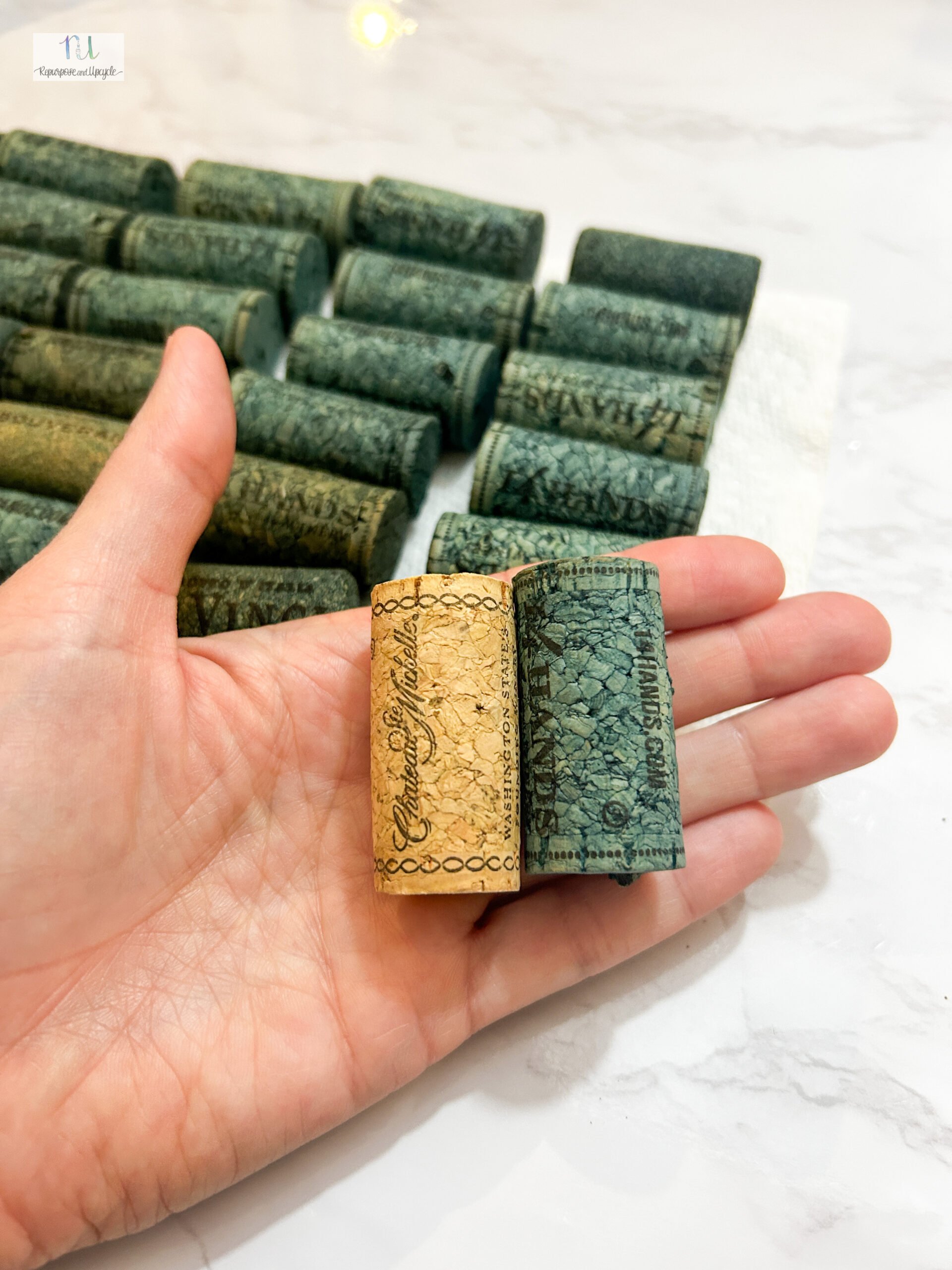Are you thinking of painting your cabinets? Maybe you are getting ready to do a quick kitchen update or full bathroom remodel and you’ve decided to save money by painting them yourself. First of all, good for you! Secondly, I hope to give you the tools to feel confident to do it.
I recently wrote a post about the best primer for wood and wood furniture. You are probably wondering why this post might be any different.
Most cabinets today are made from something called Melamine or pressed laminate and they aren’t real wood. This is an entirely different surface than wood and because of that paint will adhere to it differently.
Some of you might be thinking, “do I really need to use primer before painting my cabinets?” Yes Yes Yes. Make sure to check out my post before you leave if you have any doubt.
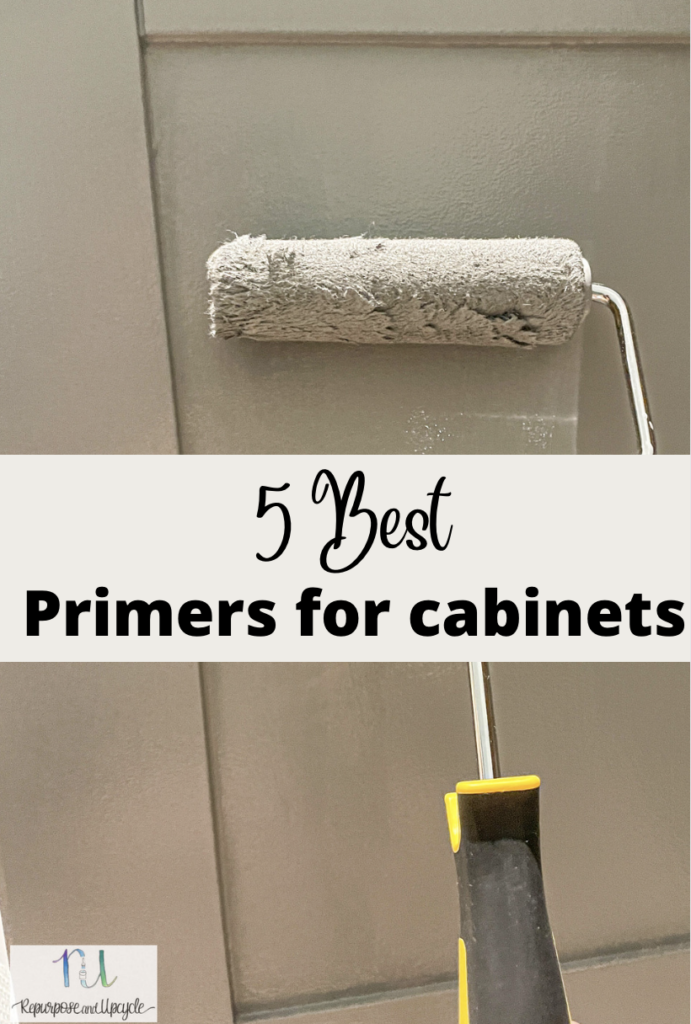
Also, you need to understand that melamine (laminate, faux wood, etc.) is ultimately a form of plastic. You generally wouldn’t slap paint on a piece of plastic without something to help make it stick right? You can read all about how to paint any laminate or melamine surface in my array of posts below:
- How to Paint Melamine or Laminate Cabinets without a Paint Sprayer
- How to Repaint Laminate Cabinets the Right Way
- My Experience with the Do’s and Don’ts of Painting Laminate Surfaces
- A Year in Review of How I Painted my Laminate Kitchen Cabinets with Two Methods
- How to Paint Laminate Kitchen Cabinets the Right Way without Sanding
- Painting Laminate Cabinets and Laminate Furniture Tutorials
All this to say, when you are looking for the best primer for kitchen cabinets, cabinet doors, cabinet frames, or any paint job where you need to create a smooth finish for a high traffic surface, you need to know what the material is made of.
Painting solid wood cabinets
The best thing about solid wood cabinets is that you can sand them lightly with a fine grit sandpaper to ensure a really good bond between the primer and the cabinet especially if it has a thick varnish layer or heavy top coat.
Do you have to sand solid wood cabinets before painting?
No. Even though most would suggest that you will get the best results if you sand solid wood cabinets before painting, it’s not necessary as long as you use a good bonding primer first. Make sure to check out my post on the best paint for cabinets without sanding, especially if you are going to forgo the sanding process.
How many coats are needed of primer on wood
When trying to decide how many coats of primer on wood needed for the cabinets, ask yourself a few questions;
- Are you applying a light paint to dark cabinets? If so, then apply two coats of primer
- Are the cabinets heavily varnished? Use two coats of primer
- Do you plan to sand the base layer of wood before applying primer? One coat of primer should be sufficient if you’ve properly sanded first
Ultimately this is a case by case situation. My best piece of advice is “when in doubt, always apply a second coat of primer because it can’t hurt.”
Below is a list of the best rated primers for painting any sort of cabinet.
Types of primers for cabinets
Most primers will fall into one of the three main categories listed below:
Water-based acrylic or latex primers
Water based or latex primers are most DIY’ers favorite due to the fact that they have low VOC’s (emit minimal odor), easy to use and easy to clean up with only soap and water. They also are quick drying.
That being said, they are known to be the least effective.
Oil-based primers
Oil based primers have been the “gold standard” of primers for years. They are known to perform better than water or latex based primers, but it comes with a downfall; the fumes. Drying times are much longer than water based and cleanup has to be done with a solvent based cleaner like mineral spirits. Also, technology has come a long way as far as paint formulations that oil-based paint and oil-based primers aren’t necessarily the go-to product anymore.
Shellac based primers
Shellac primers are known to be the best odor blocking and stain-blocking primer on the market. It’s made from a resin like material and it’s the only primer available with a clear color. The strong odor is as heavy as oil based primers but it gives out an alcohol smell. Caution needs to be used when using shellac primers in a paint sprayer (which isn’t always recommended) due to the amount of alcohol fumes which also causes a fire risk.
Disclosure; this post contains affiliate links. As an Amazon Associate I earn from qualifying purchases. This disclosure statement refers to the rest of the Amazon links in this post. See more on my disclosure page.
Without further ado, let’s talk about my favorite primers for cabinet refinishing.
Best Primer for Cabinets
KILZ Adhesion Primer
KILZ Adhesion is a unique latex primer developed to bond securely on slick surfaces where a traditional water or oil-base primer will not adhere. It bonds to tough-to-paint surfaces including Kynar, PVC, Formica, vinyl, glass, tile, glazed brick, chalky paints, glossy finishes, fiberglass and metals.
It dries to the touch within 30 minutes and can be recoated in one hour.
Pros: This type of primer has great adhesion qualities, little to no VOC’s, bonds to almost any surface, dries quickly, easy cleanup
Cons: Little to no stain or odor blocking qualities
Best cabinet surface to use on: This primer is great to use on Melamine or Laminate cabinets. It’s also great for wood cabinets that have a heavy top coat or sealer.
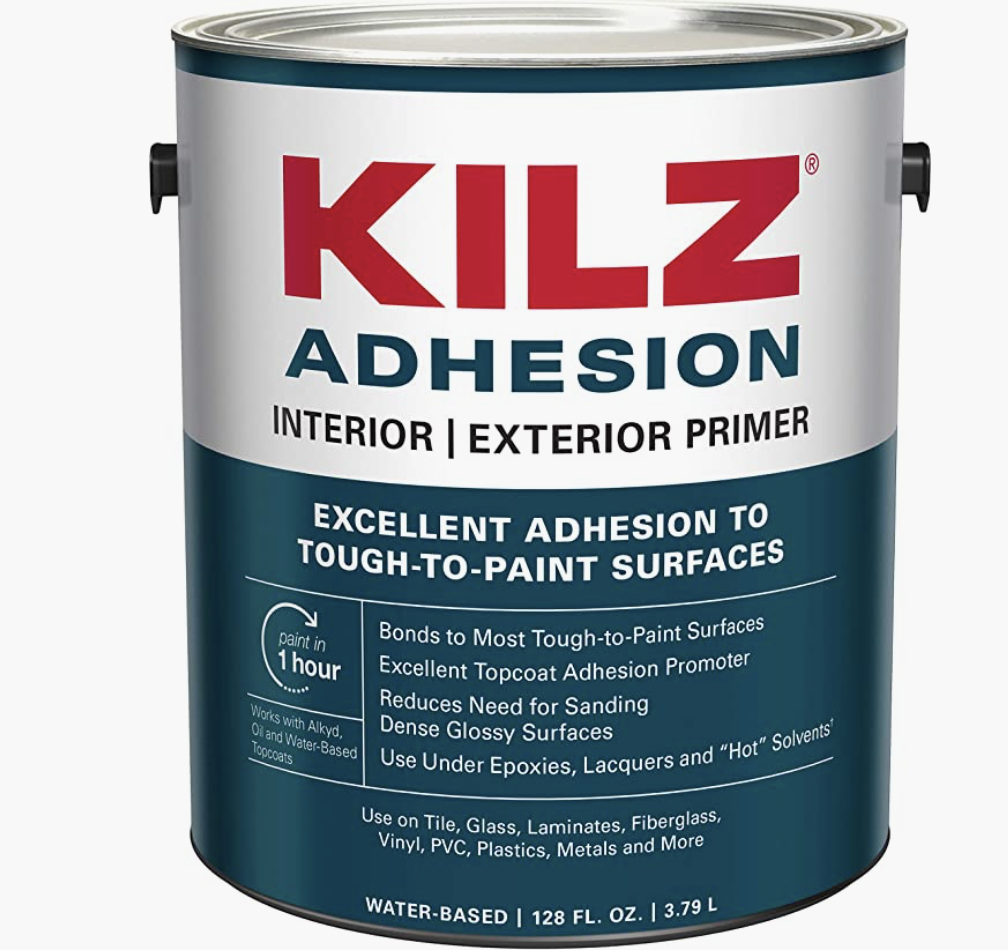
KILZ 3 Premium Primer
KILZ 3 Premium primer is a powerful stain-blocking water-base formula that seals surfaces, helps to achieve a uniform finish and hides stains and previous colors. It also offers good adhesion to most interior and exterior surfaces and prevents mildew.
Pros: No VOC’s, easy soap and water cleanup, stain blocking qualities, dries quickly, easy cleanup
Cons: No odor blocking, expensive
Best cabinet surface to use on: This primer is great for previously painted cabinets with a color you are trying to cover up. KILZ mildew-resistant finish also makes it ideal for high-humidity areas including bathrooms and laundry room cabinets.
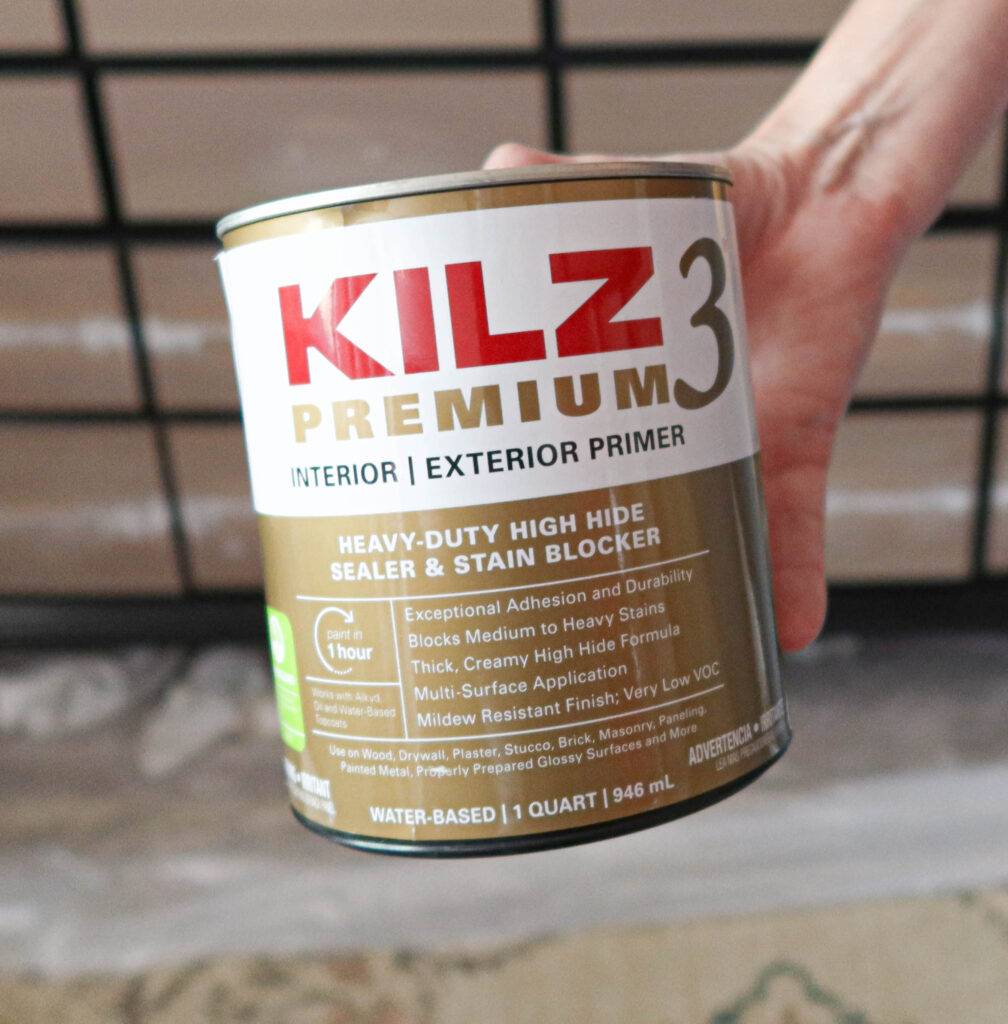
I’ve personally used this primer to paint an old antique desk with an ombre effect that needed some love. It had a cigarette odor and was obviously thrown to the trash, not to mention the awful stains that came with it. I was very pleased with how well it covered up the old smell. It definitely was the best choice for hiding smells and paint irregularities.
Zinsser Bulls Eye 1-2-3 All Surface Primer
This is a great overall water-based primer that seals uniformly and will stick to surfaces without sanding. It has excellent stain blocking resistance and can be used with any oil or latex topcoat. It comes in white or gray and even has a spray paint product as well.
Pros: Mold and mildew resistant, stain and odor blocking, decent adhesion qualities, no VOC’s, easy water cleanup, very affordable
Cons: Coverage isn’t great
Best cabinet surface to use on: This is a great products for any type cabinet including raw wood cabinets. It’s got a lot of good qualities, but it’s not great at any one quality.
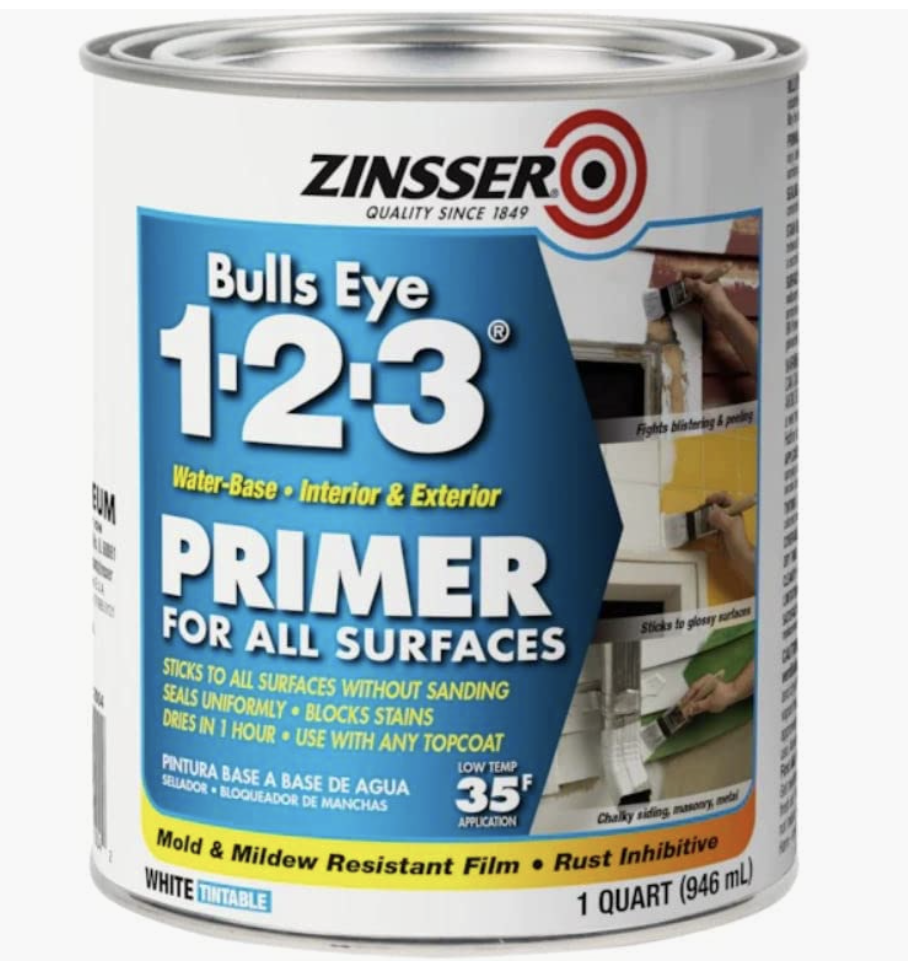
This is the first primer I ever used and I’ve been using it ever since. I primed my old laminate kitchen cabinets with it and they’ve held up great! Even though it is my go-to primer, if you need a specific primer for a specific purpose (like to cover up old smells), it might be a good idea to check out other options. Overall, if you have a decently smooth surface without too many irregularities, this is a great primer choice.
Zinsser BIN Advanced Shellac Primer
B-I-N Advanced Synthetic Shellac Primer is a synthetic shellac-based primer that provides excellent stain blocking qualities. It combines fast dry time, low odor, excellent hide and stain blocking. This Shellac primer is also known for great adhesion qualities.
This primer is known in the furniture painting business as being a go-to primer for melamine and laminate like when painting IKEA furniture.
One downside of this primer is that it contains alcohol and using it in a paint sprayer can create a health hazard without A LOT of ventilation. This also makes it a little more difficult to cleanup than regular water based primers but still easier than oil based.
Pros: Quick dry time, excellent stain and odor blocking qualities, great adhesion qualities for hard to paint surfaces
Cons: Cleanup with denatured alcohol, heavy alcohol fumes
Best cabinet surface to use on: This is a great all around primer that sticks really well to melamine and laminate surfaces making it a great primer for non wood cabinets (especially IKEA cabinets).
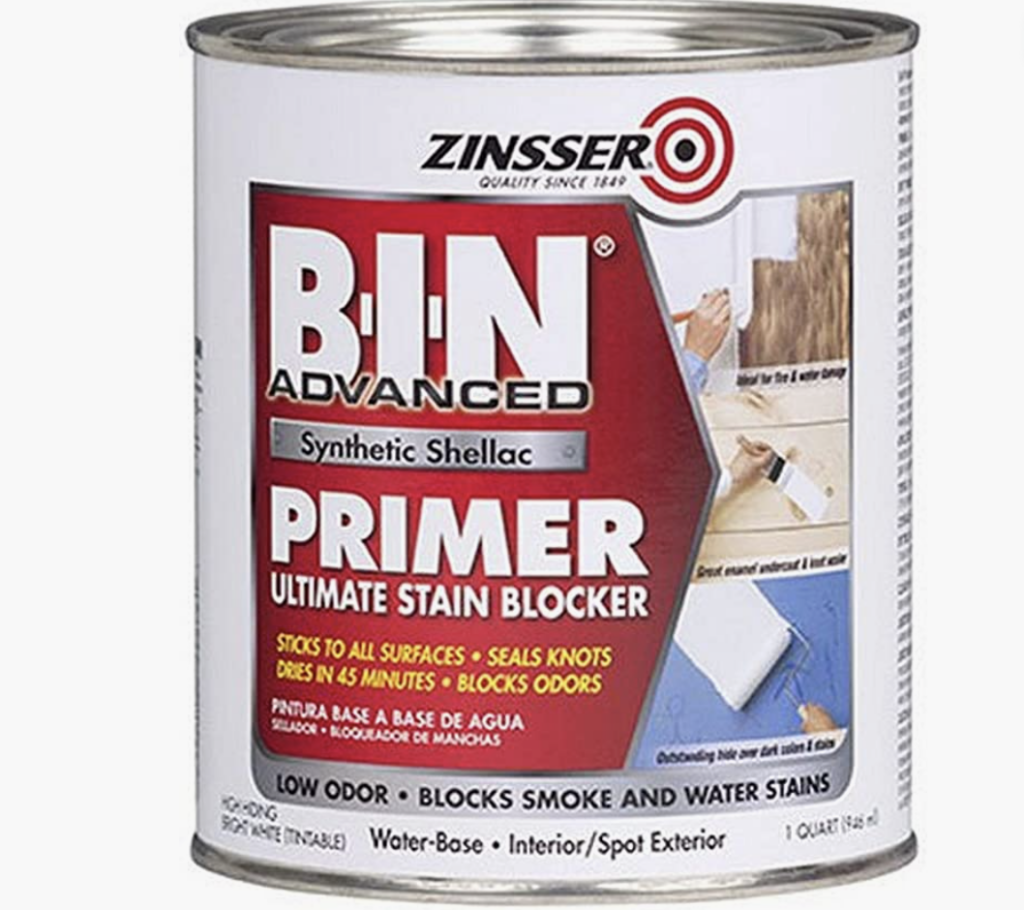
INSL-X Stix Acrylic Waterborne Bonding Primer
Stix Waterborne Bonding Primer is a premium quality, waterborne acrylic urethane primer with great adhesion to the most surfaces including plastic. Stix waterborne primer levels to a smooth surface and cleans up with soap and water. Dry time is longer than water based at 3-4 hours but still quicker than oil based primers.
Pros: Excellent adhesion properties, easy soap and water cleanup, bonds to virtually any surface, no VOC’s
Cons: Slower dry time
Best cabinet surface to use on: This primer is excellent at covering very slick, plastic, melamine or laminate cabinet surfaces.
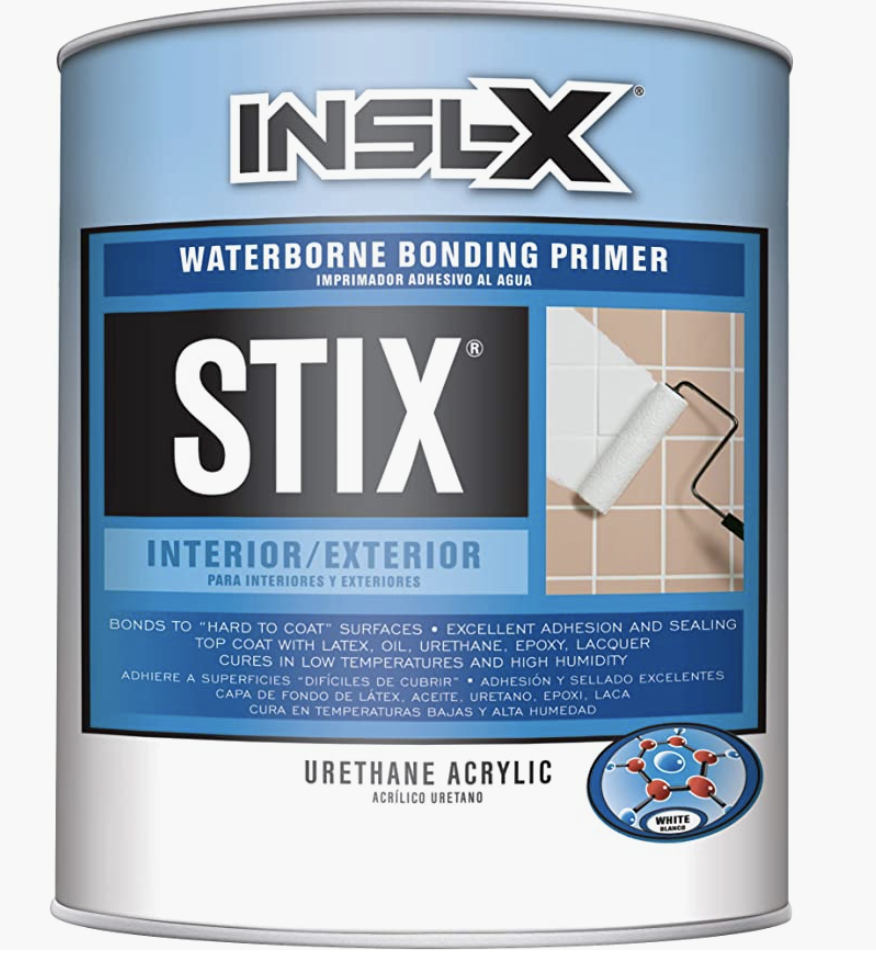
There you have it, my five favorite primers!
Even though I believe that when painting high traffic surfaces (like cabinets) you need a seperate primer product, feel free to check out a few of my favorite paint and primer in one products here.
I hope this list will help you choose the right primer for your painting project.
Thanks for stopping by!
Lindsey**


